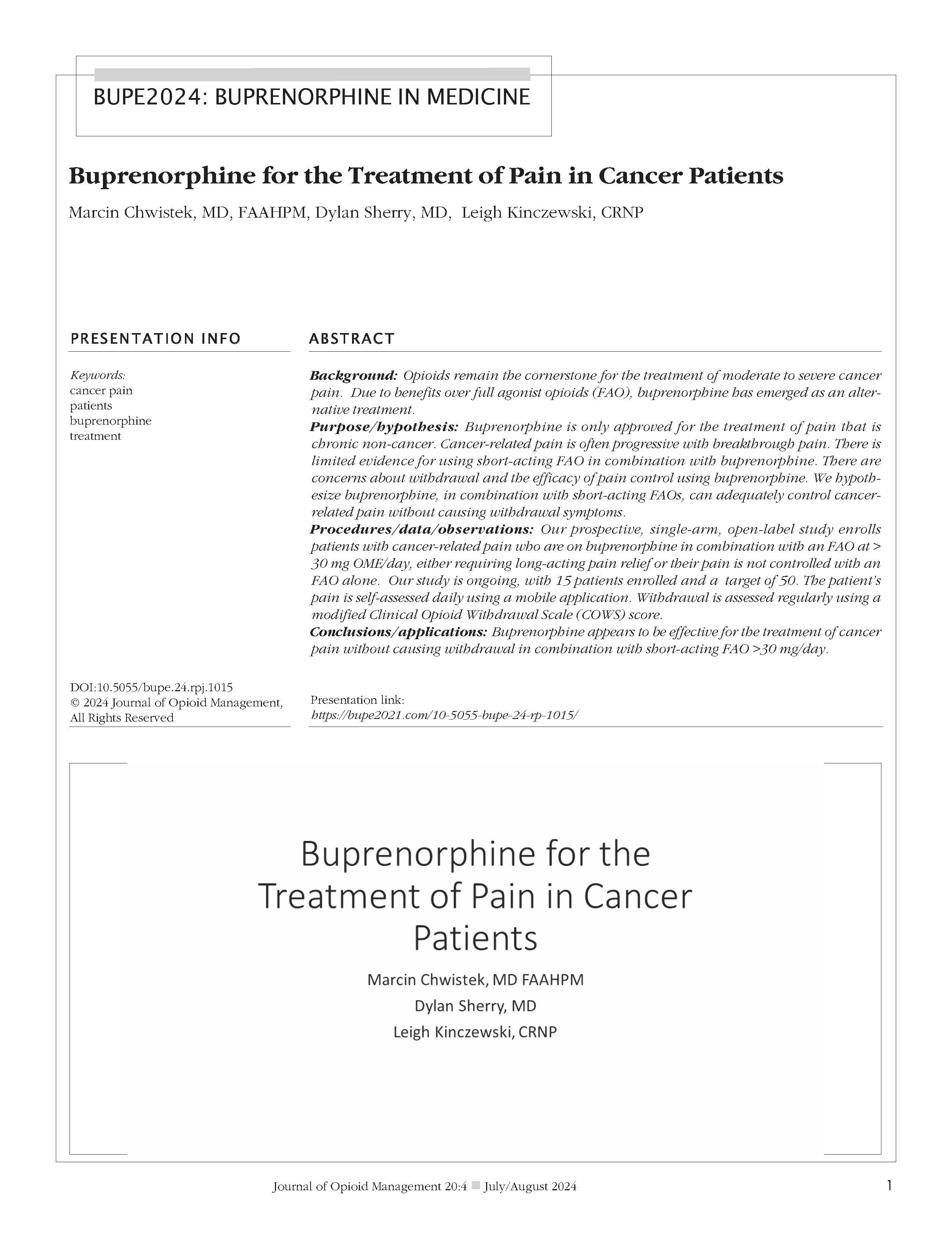Buprenorphine for the Treatment of Pain in Cancer Patients
DOI:
https://doi.org/10.5055/bupe.24.rpj.1015Keywords:
cancer pain, patients, buprenorphine, treatmentAbstract
Background: Opioids remain the cornerstone for the treatment of moderate to severe cancer pain. Due to benefits over full agonist opioids (FAO), buprenorphine has emerged as an alternative treatment.
Purpose/hypothesis: Buprenorphine is only approved for the treatment of pain that is chronic non-cancer. Cancer-related pain is often progressive with breakthrough pain. There is limited evidence for using short-acting FAO in combination with buprenorphine. There are concerns about withdrawal and the efficacy of pain control using buprenorphine. We hypothesize buprenorphine, in combination with short-acting FAOs, can adequately control cancer-related pain without causing withdrawal symptoms.
Procedures/data/observations: Our prospective, single-arm, open-label study enrolls patients with cancer-related pain who are on buprenorphine in combination with an FAO at > 30 mg OME/day, either requiring long-acting pain relief or their pain is not controlled with an FAO alone. Our study is ongoing, with 15 patients enrolled and a target of 50. The patient’s pain is self-assessed daily using a mobile application. Withdrawal is assessed regularly using a modified Clinical Opioid Withdrawal Scale (COWS) score.
Conclusions/applications: Buprenorphine appears to be effective for the treatment of cancer pain without causing withdrawal in combination with short-acting FAO >30 mg/day.

Downloads
Published
How to Cite
Issue
Section
License
Copyright 2005-2025, Weston Medical Publishing, LLC and Journal of Opioid Management. All Rights Reserved.










